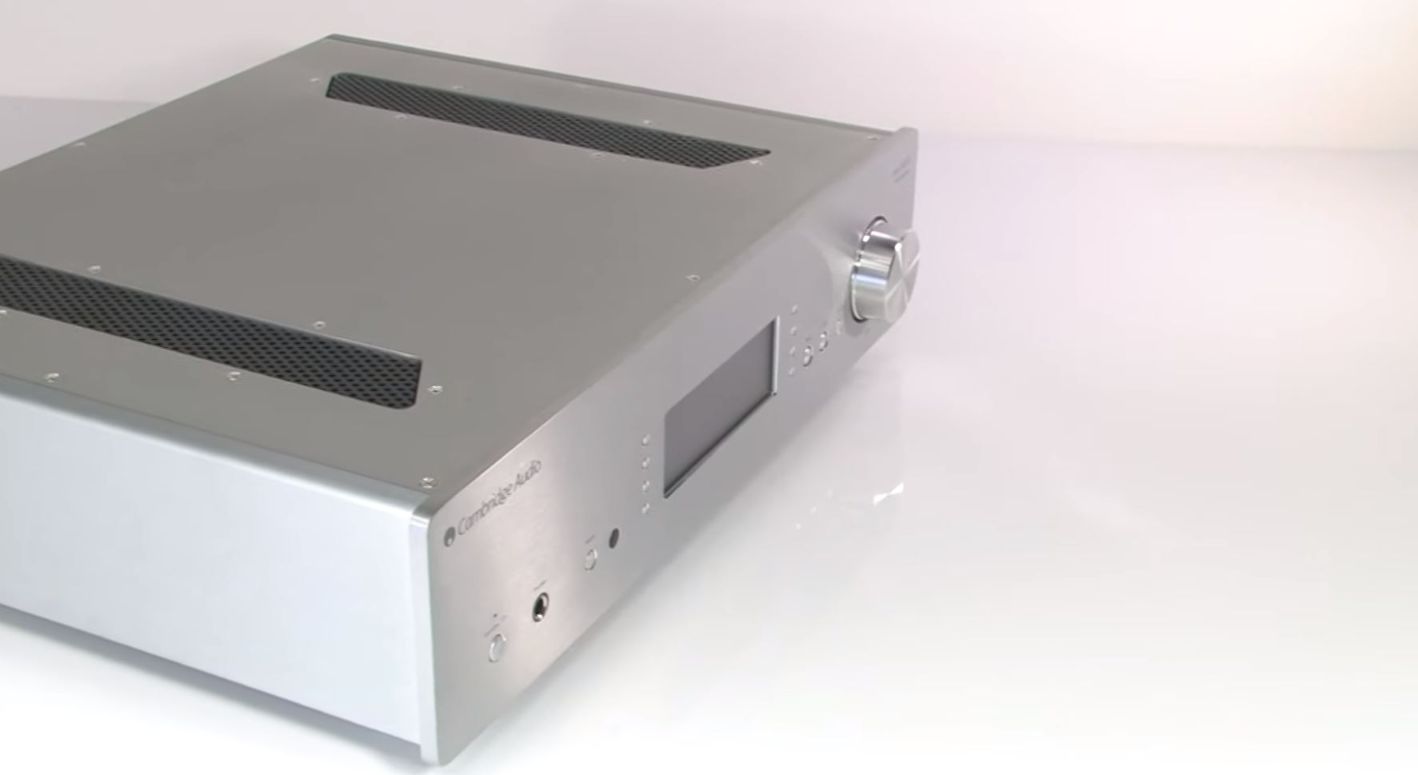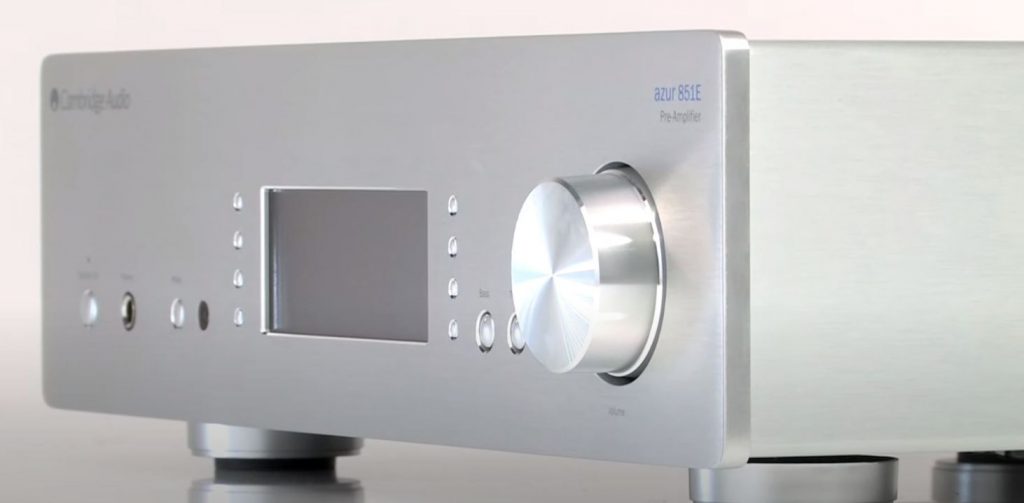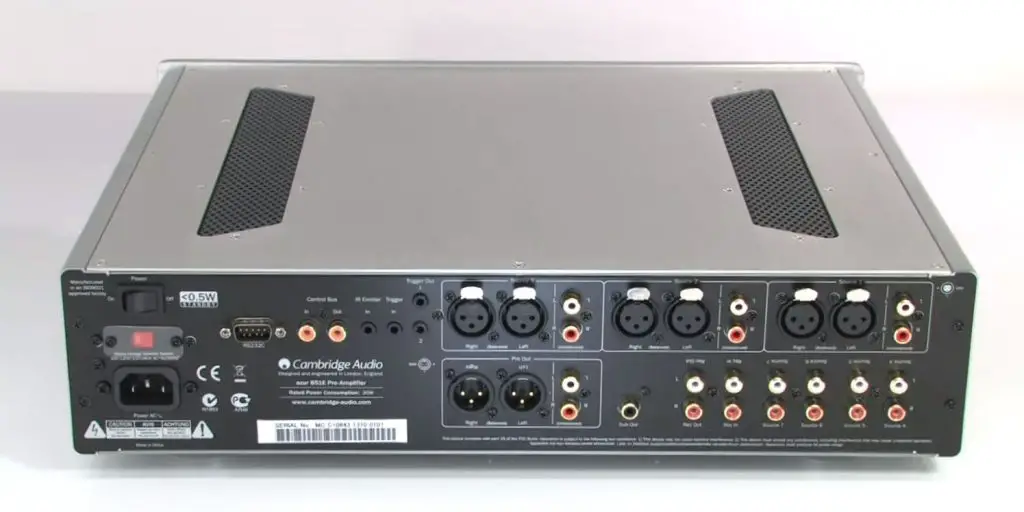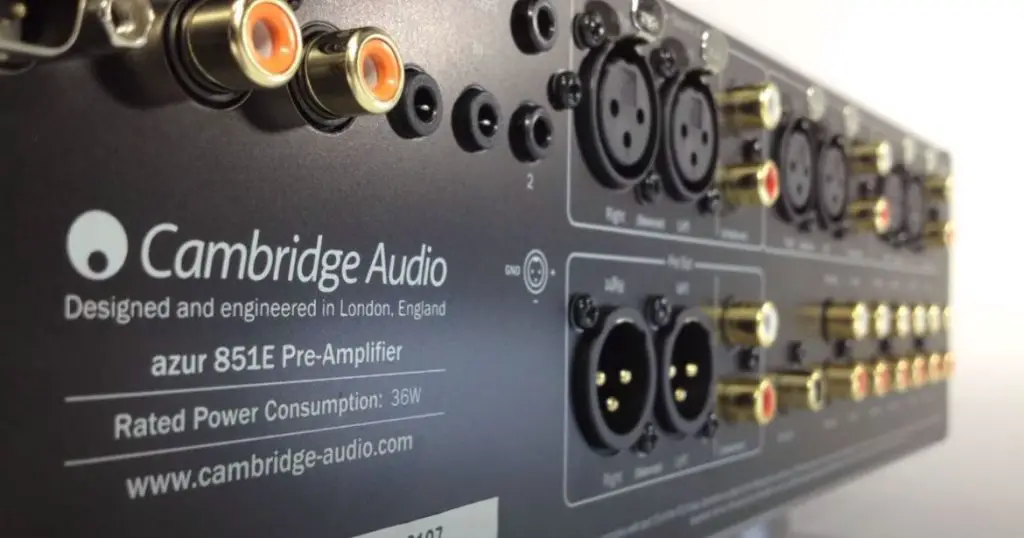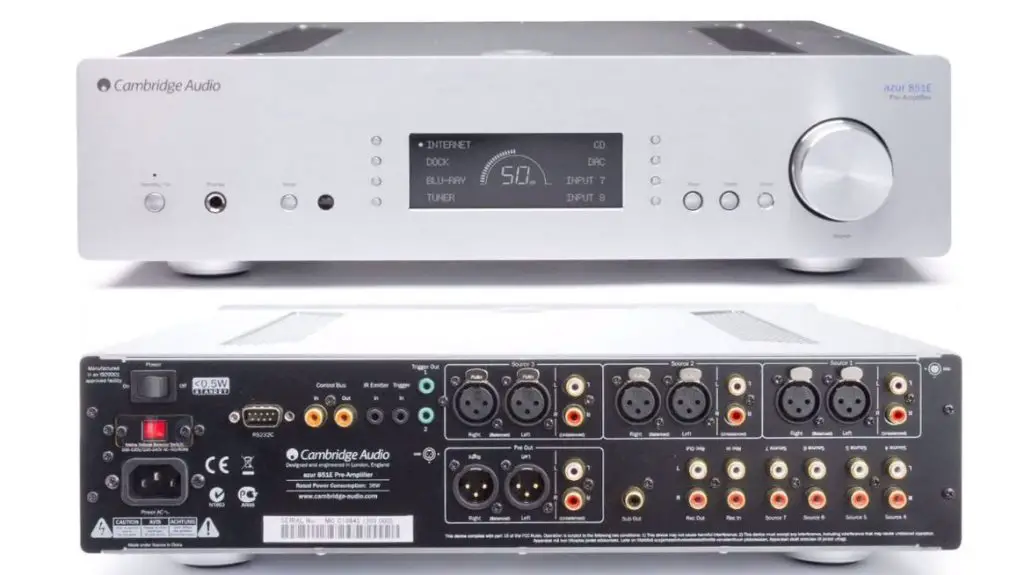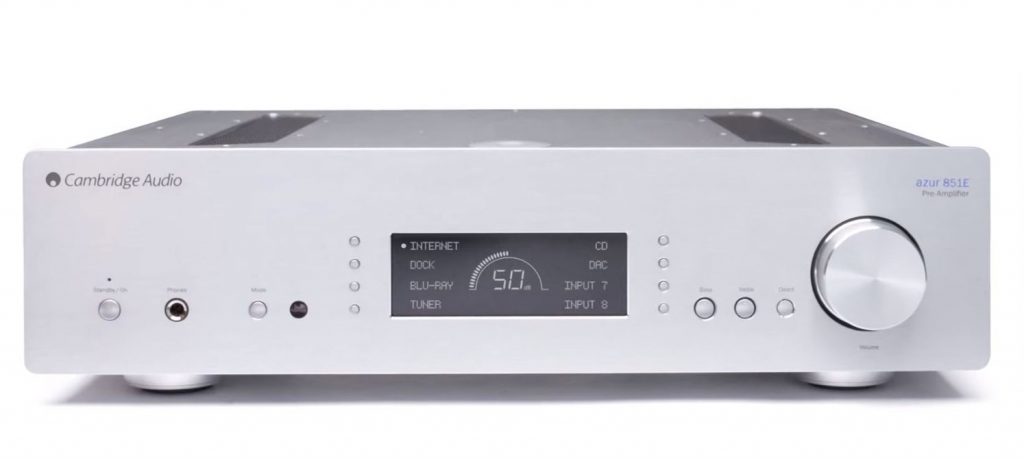Cambridge Audio Azur 851E Review
For audiophiles, no matter how expensive your audio system is and how advanced your audio experience is, I think there is always a brand that has a different meaning to you. To me, it is the Cambridge audio.
The Cambridge Audio Azur 851E preamp to be reviewed this time is a practical product that is very suitable for entering the Hi-End audio world. Because it has complete and powerful functions, outputs and inputs provide various adjustment functions and can be integrated into a multi-channel system. It can also be equipped with a subwoofer and convenient remote control. The most important thing is that it is easy to match the input signal source and the power amplifier. It has a neutral and thick sound, versatile tones, and, most importantly, affordable.
The preamp occupies a key position in the signal transmission path. It has to deal with many different sources, so it must properly match different sources’ output impedances and have enough driving capabilities to connect to the power amplifiers. The entire music signal transmission is the process of level by level amplification and impedance matching. When the impedances are matched, the sound is the best. Such a process exists from the signal source to the preamp, to the power amplifier, and finally to the speaker.
The Design
How does Cambridge Audio Azur 851E Pre-Amplifier handle the output impedance of different sources? The reason is the TerraPin Buffering technology, which is a modular design concept. The input buffer stage is designed to be an integrated circuit module. It will automatically change the impedance to match the input signal. Because it is a modular circuit, TerraPin Buffering can also be used in the input buffer stage of other models in the Azur series, such as the Azur 851W power amplifier.
The power supply part Azur 851E is equipped with a large toroidal transformer, sealed in a metal cover to prevent magnetic leakage from interfering with the audio signals.
The entire back panel is full of output and input connections. Azur 851E is equipped with seven groups of input terminals, of which groups 4 to 7 are RCA inputs, and groups 1 to 3 have both RCA and XLR inputs. You can define whether to enable RCA or XLR through the panel control. Why is it designed like this? Its advantage is that you can connect at least 3 XLR output sources or connect up to 7 RCA output pieces of equipment, flexible to use. The output provides XLR and RCA interfaces.
In addition, there is a subwoofer output RCA terminal on the back panel, which can be connected to an active subwoofer. This terminal has a 200Hz low-pass filter. That is to say, the filter function can be turned on or off through the panel so that the Azur 851E can output a full frequency performance or only output signals below 200Hz.
There are three buttons on the right side of the Azur 851E display screen: Bass, Treble and Direct, used to adjust the volume of low and high frequencies. Among them, Bass and Treble look like buttons, but they are actually knobs. They will pop up when you press them lightly. They can be rotated to turn on or down the volume for the low and high frequencies. After you adjust them, press the knob back.
The Direct button can control whether to turn on the adjustment function of Bass and Treble or not. When the Direct button is turned on, the signal path will skip the tone adjustment function to keep the signal pure.
Inside the 851E, the first thing you see is the input buffer module. When the analogue signal enters the Cambridge Audio Azur 851E, it will take the lead in buffering the signal. What are the benefits? Generally speaking, when the analogue signal enters the preamp, it is more susceptible to be interference. If the signal is processed by the buffer stage first before being handed over to the amplification module digitally, the signal interference can be significantly reduced.
Next, if you look closely at the circuit board of the 851E, you can find multiple square metal shells, with TerraPin Hybrid Amplifier Module marked on the top. Since this metal shell cannot be opened, it is impossible to know the components used inside. But according to Cambridge audio, these modules covered with metal shells are Cambridge’s patented technology and are used to match the input impedance.
According to Cambridge research, when designing the audio equipment, many manufacturers will declaim that they carefully select specific parts to achieve the timbre effect they are trying to create. That is the impedance between the devices. The input, the relationship between the output current and voltage, causes unnecessary sound pollution. TerraPin’s module technology effectively reduces the impedance matching problem between different types of equipment, keeping the equipment in the best condition and obtaining the best sound quality reproduction.
Finally, the power supply. The 851E does not use a traditional EI transformer but uses a toroidal transformer as the power supply. The outside is covered with a high diamagnetic metal shell to reduce the interactive interference between power processing and signal path. Moreover, all the internal parts of the 851E are strictly selected to reduce the influence between the components. From the specifications, the total harmonic distortion marked by the 851E is indeed dazzling.
Sound Performance
Play Joshua Bell‘s Tchaikovsky violin repertoire with the Berlin Philharmonic accompaniment by Michael Tilson Thomas, and you can immediately discover the advantages of Azur 851E. That is, openness, atmosphere, balance, orderly structure, and it sounds very relaxed, without losing the song’s excitement. Azur 851E does not show pronounced characteristics. It is neutral, straight, without colour, and restores the original appearance of the signal.
This sounds like Azur 851E has no advantages, but it’s not true. Azur 851E has a very smooth, very deep energy output capacity. The speed is not particularly fast, the impact is not particularly strong. Still, the volume fluctuations and contrast are very layered. The details are rich, and the music is very comfortable.
The Azur 851E has a good performance in terms of the separation of the instruments, the level of the sound field, and the structure of different frequency. Even if it is a complex or exciting section, it seems well organized and has a lot of control.
In the recording of Joshua Bell, it can also be found that Azur 851E still has a British warmer style. The strings are thick rather than light, less smooth and translucent but rich and resonant texture known for its charm.
The PMC movie clip “Closing the loop” reveals another advantage of Cambridge Audio Azur 851E: the rich and natural details. In this movie clip, apart from the more impactful drum on track 1 of “Pacifist”, the others are mostly slow melody, undulating and soothing tunes, mainly to present the detailed performance and low-frequency rendering ability at low volume. Through the playback of Azur 851E, there are not many details at first glance, but it does not lack. It is because Azur 851E is not throwing the details to you, but naturally and generally release them in the recording to make the music lively.
Take the seventh track of Zara McFarlane’s “Until tomorrow” as an example. The song is accompanied by piano, double bass and jazz drums. Through Azur 851E, I hear that there is a clear separation between the singer and the harmony. It has a complete audio and image contour and sound quality thickness, and it can still maintain accurate, balanced, and detailed performance at low volume. You don’t need to turn to a high volume deliberately. As for loud and dynamic listening, Azur 851E has plenty of energy with distinct levels but without aggressive stimulation. Long-term listening is not easy to get tired of.
Conclusion
In summary, the Azur 851E Preamplifier is like all other Cambridge Audio equipment. It is a preamp that can quickly produce good sound. As the flagship model, the Azur 851E has versatile and complete functions and a solid circuit design and performance conditions. More importantly, it also does not have the price of the sky-high level. It is the best choice for those who have a limited budget and want to take a look at the Hi-End world.
Cambridge Audio Azur 851E Specs
- THD (UNWEIGHTED): < 0.00045% @ 1kHz < 0.00057% @ 20kHz S/N (UNWEIGHTED): < 110dBr < 90dBu FREQUENCY RESPONSE: 10Hz – 100kHz ± 0.1dB CROSSTALK @1KHZ: > 110dB
- MAXIMUM OUTPUT: 8V RMS unbalanced 8V + 8V rms balanced
- OUTPUT IMPEDANCE: 100 Ohms (Unbalanced or Balanced)
- SUBWOOFER OUTPUT: Flat or 200Hz 2nd Order Butterworth LPF
- MAX POWER CONSUMPTION :36W
- BASS & TREBLE CONTROL: Shelving type
- MAX BASS BOOST/CUT: ± 10 dB at 10 Hz
- MAX TREBLE BOOST/CUT: ± 7.5 dB at 20 kHz
- STANDBY POWER CONSUMPTION: <0.5W
- COLOUR: Black and silver
- DIMENSIONS (HXWXD): 115 x 430 x 385mm (4.5 x 16.9 x 15.2’’)
- WEIGHT: 8.1kg (17.9lbs)
